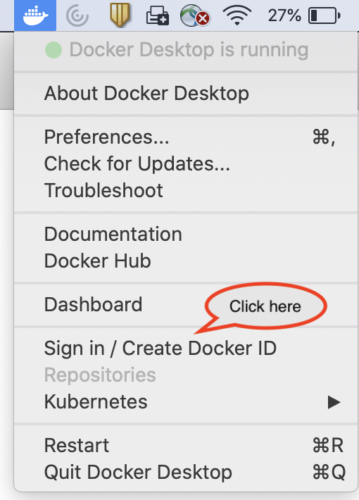

Using the -P (upper case) flag at runtime lets you publish all exposed ports to random ports on the host interfaces. There are two ways of publishing ports in Docker: Therefore, when your Node.js application connects to the 6379 port of the Redis container, the EXPOSE directive is what ensures the inter-container communication takes place. This is what allows the two containers to talk with one another. If you check the Dockerfile of the official Redis image, a line is included that says EXPOSE 6379. To ensure the Node.js application communicates with the Redis server, the Redis container should expose a port. In other words, it only makes the stated ports available for inter-container interaction.įor example, let’s say you have a Node.js application and a Redis server deployed on the same Docker network. EXPOSE does not provide much networking control to an image developer.Īs earlier explained, you can use the –expose flag in a Docker run string to add to the exposed ports.īy default, the EXPOSE instruction does not expose the container’s ports to be accessible from the host. You can also provide a range of ports as an argument:īasically, EXPOSE is a documentation mechanism that gives configuration information another command can use, provides a hint about which initial incoming ports will provide services, or informs the decisions that the container operator makes.
Docker for mac thp allow how to#
Here is an example of how to use the flag in a Docker run string: Using the flag is additive, which means that it will expose additional ports together with those stated by the EXPOSE keyword. On the other hand, –expose is a runtime flag that lets you expose a specific port or a range of ports inside the container. If you want to specify both UDP and TCP, add two lines: The above line will instruct Docker that the container’s service can be connected to via port 8080.īy default, the EXPOSE keyword specifies that the port listens on TCP protocol. Here is an example of how to expose a port in Dockerfile: With the EXPOSE rule, you can tell Docker that the container listens on the stated network ports during runtime. While the two commands are equivalent, they differ in how they work. Including an EXPOSE instruction in the Dockerfile.There are two ways of exposing ports in Docker: This article will demonstrate how to apply different networking rules when implementing Docker expose ports instructions in your code.Įxposing Docker ports via EXPOSE or –expose Whereas each of the above rules may realize mostly similar results, they work differently. Use the -p flag or -P flag in the Docker run string to publish a port.


Use the –expose flag at runtime to expose a port.Add an EXPOSE instruction in the Dockerfile.To containerize an application, you’ll need to write a Dockerfile-which has instructions Docker uses for building and running images.Īt times, you may need to set out some networking rules to enable smooth interaction between containers in multi-container applications or make your Docker ports accessible by services in the outside world. The Docker open-source platform has revolutionized the way we create, deploy, and manage containerized applications.


 0 kommentar(er)
0 kommentar(er)
